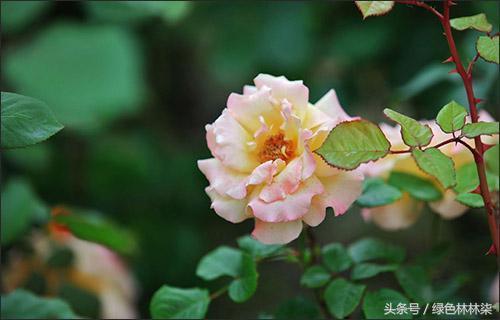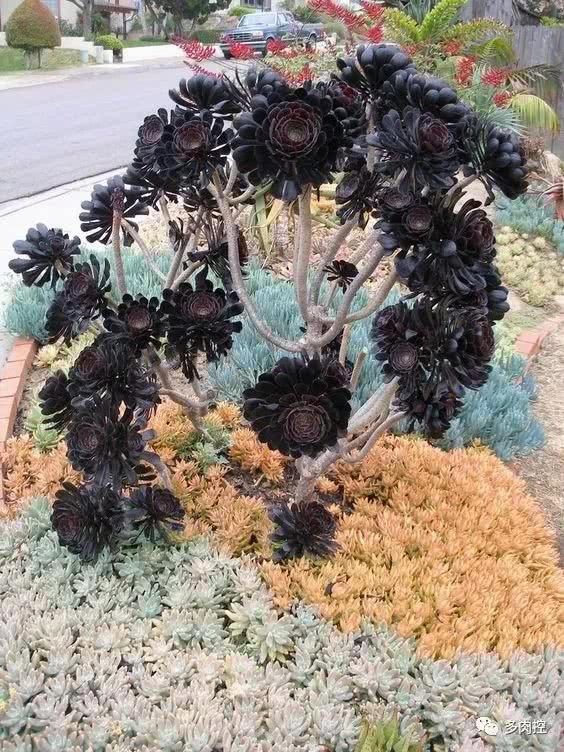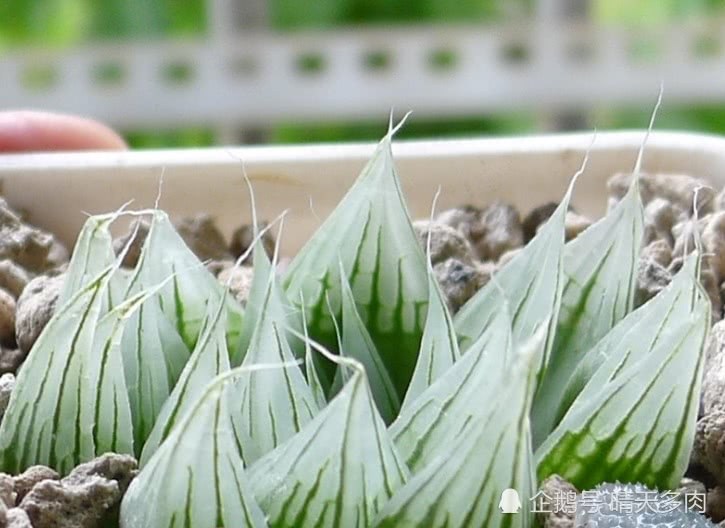Grasping climate change, cultivating flowering branches, autumn rose can also burst into pots.

After the high temperature in summer, the rose will enter a full blooming season in autumn, so it is necessary to seize the condition of climate change to cultivate flowering branches. In this way, your rose can bloom one crop after another in autumn!
Fertilization and watering of rose in autumn
The main results are as follows: 1. When the climatic conditions change, the rose awakens from the semi-dormant state (non-semi-dormant plants), and the amount and times of fertilizer application should be gradually increased.
2. At first, high nitrogen compound fertilizer was used to irrigate the root of the plant, once every 5 days or so, continuously, and then stopped after four times. After the bud point germinated, when the stem node elongated to about 4 cm, the branches and leaves were sprayed with dihydrogen phosphate at most three times, with an interval of 5 days, and the flower buds were discontinued after coloration.
3. For bribes with poor activity or suffering from diseases and insect pests, complete leaves are less sprouting, and the mixture of brassin and potassium dihydrogen can be used to spray branches and leaves once every 15 days, twice at most, which can accelerate the growth of new buds.
4. The plants with granulated slow-release fertilizer or organic fertilizer embedded in the basin should be added and replenished in time according to the fertilizer effect.
5. In autumn, the weather is generally dry and the night temperature is low, so try to water the plant in the morning, not suitable for watering at night. If there are high temperature and dry climatic conditions, sunshade spray should be used to cool and humidify in summer.
6. Because the air humidity in autumn is generally lower than that in spring, the bud germination is slower and the plant growth is slower, so it is necessary to wait patiently; the rhythm of fertilization and watering should be adjusted in time according to climate change, and when it is hot and dry in autumn, the interval of fertilization should be properly extended to avoid fertilizer damage, and at the same time, drought caused by water shortage should not cause yellow leaves.
The pruning of rose in autumn
First of all, cut off the diseased and weak branches, withered branches and cross-clustered branches formed in summer.
1. Pruning of steep branches: steep basal branches or lateral branches formed under warm and cool climate in summer are cut in the middle to promote the formation of new axillary buds (except Fujimoto rose).
Position: there were 5 intact leaves in the lower part of the basal branch, 3 intact leaves in the lower part of the lateral branch, and the rest was cut off in the upper part. If the lower part of the branch has fallen leaves, observe the leaf scars, leaving 5 full bud points for each basal branch and 2-3 bud points for each inverted branch. After any bud point on each branch germinates and grows into a five-leaflet, cut off (or erase the bud point) the branch above the reserved uppermost bud point.
2. Pruning of normal branches (with leaves in the lower part): all main branches are not pruned. Side branches: each secondary branch leaves three bud points, each branch leaves two bud points, and the rest are trimmed off. There is no observation and treatment method mentioned above.
3. Fujimoto rose: socks planted for more than one year, the side branches (short branches) after flowering are cut off by half of their length, and the long branches after flowering at the top are drawn and fixed. The plants of the same year (or those transplanted in the same year) can be cut lightly, and the top two five-leaf (or three-leaf) leaves on the top of the lateral branches can be cut off, and the same auspicious burst of long branches will be drawn and fixed.
4. If the branches that have been pruned in summer grow slowly and have few branches, they do not have to be pruned repeatedly.
5. Theoretical calculation of the total amount of branches and flowers of normal potted rose (abundant flower rose and shrub rose): cultivate 5 primary main branches (including basal branches), 3 secondary branches on each main branch, 2 tertiary branches on each secondary branch, if all tertiary branches can blossom at the same time, the number of tertiary branches is 30. Note: only the main buds are calculated, but not the long secondary buds; it is difficult to achieve such a sufficient and accurate flowering quantity of open-air potted roses.
6. Pruning of miniature rose: strong seedlings for more than one year can be cut in the middle, that is, all the technical strips can be cut off half the height. The autumn flowers with satisfactory results can be obtained by cutting off 1/3 of the height of the plants in the same year.
Diseases and insect pests
1. Diseases: powdery mildew and black spot continue to be controlled in the high-temperature and humid areas in the south, while in the warm, cool and dry areas in the north, the infection rate of rose plants is very low after autumn.
2. Insect pests: the harm of whitefly, curly leaf pin and thrips in autumn is serious, so we should continue to spray to prevent and kill them.
Other
In the non-dormant area in the south (medium temperature and high humidity), the rose should be continuously peeled and pruned to control the vegetative growth rate and maintain the plant type. in the early winter in the north, attention should be paid to the use of nitrogen fertilizer after autumn flowering to avoid frost damage to the sprouting autumn shoots after autumn, while avoiding the consumption of plant nutrition and reducing the plant's ability to resist freezing damage.
- Prev

Fleshy succulent roses-- A guide to the mage series
Wonderful ability Song & nbsp; Chen Li's single list Chen Li & nbsp; 00001 00Universe 04VR 13.
- Next

The glittering and translucent succulent plant is a cool summer.
The glittering and translucent twelve volumes belong to jade dew succulent, which is a cool summer. Every time I see them, they are very comfortable. But if you find it red in the sun at home, get it in a place with less sunshine. Yulu belongs to the genus of twelve volumes.
Related
- Wuhan Hospital Iron Tree Blooming Result Was Instantly Frightened by the Gardener Master
- Which variety of camellia is the most fragrant and best? Which one do you like best?
- What is the small blue coat, the breeding methods and matters needing attention of the succulent plant
- Dormancy time and maintenance management of succulent plants during dormancy
- Minas succulent how to raise, Minas succulent plant pictures
- What are the varieties of winter succulent plants
- How to raise succulent plants in twelve rolls? let's take a look at some experience of breeding twelve rolls.
- Attention should be paid to water control for succulent plants during dormant period (winter and summer)
- Watering experience of twelve rolls of succulent plants
- Techniques for fertilizing succulent plants. An article will let you know how to fertilize succulent plants.

